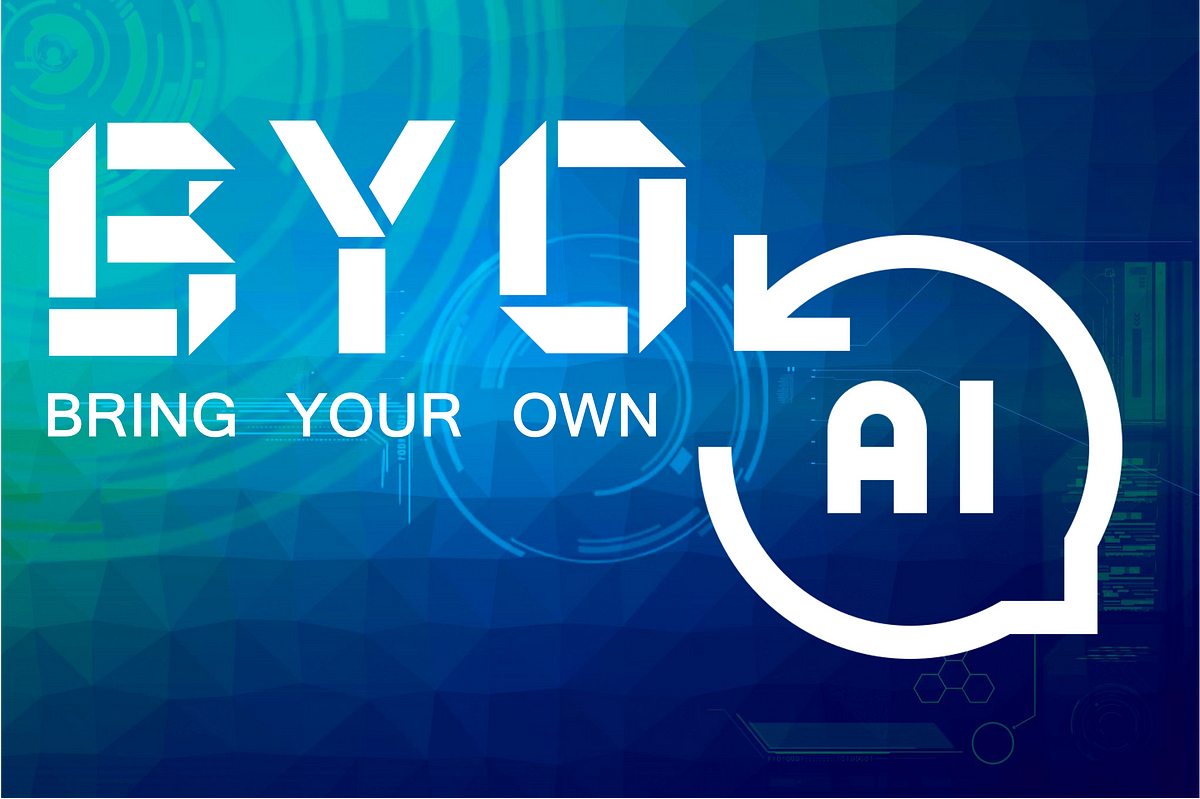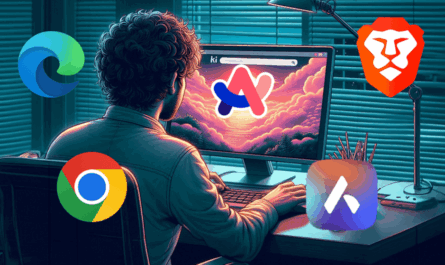Artificial intelligence (AI) tools like ChatGPT, Gemini, Claude, and DeepSeek have made workplace AI more accessible than ever. From writing emails to analyzing data, employees are using AI tools to streamline their daily work.
However, this freedom comes with a new and fast-growing challenge known as Bring Your Own AI (BYOAI) — a trend where employees use public, unapproved AI platforms at work. While this may boost productivity in the short term, it can also create major security, compliance, and data privacy risks for organizations.
In many ways, BYOAI mirrors the early Bring Your Own Device (BYOD) movement, when employees brought personal laptops and phones into corporate networks, often without IT’s knowledge. The difference now? The stakes are much higher — because this time, sensitive data could be sent directly into AI models that learn from user inputs.
What Is Bring Your Own AI (BYOAI)?
Bring Your Own AI (BYOAI) occurs when employees use publicly available or unapproved AI models to perform work-related tasks without company authorization.
For instance:
-
A marketing executive might use ChatGPT to generate a campaign proposal.
-
A financial analyst could rely on Claude or DeepSeek to evaluate investment data.
-
A customer service agent might use Gemini to craft personalized responses.
While these tools can save time and boost creativity, they also create shadow AI environments — digital spaces where company data is processed outside of official IT systems.
These unregulated activities can expose sensitive information such as client data, financial records, or intellectual property. Just like unapproved cloud storage tools in the early 2010s, BYOAI introduces invisible vulnerabilities that can damage a company’s cybersecurity posture.
Why BYOAI Is a Growing Concern
The popularity of generative AI has exploded since the public release of ChatGPT in late 2022. Employees, eager to enhance productivity, are often bypassing official channels to use AI tools freely available online.
However, this shift has blindsided IT and compliance teams. When employees interact with external AI systems, data may be stored, logged, or used to retrain large language models (LLMs). That means confidential corporate data could unintentionally become part of public AI datasets.
Key Risks of BYOAI
1. Data Security Exposure
Not all AI platforms guarantee privacy or encryption. Employees could unknowingly share confidential data with third-party servers. Once uploaded, data cannot be retracted and may be used to train future AI models.
2. Compliance and Legal Violations
Industries like finance, healthcare, and government are bound by strict data protection regulations such as GDPR, HIPAA, and SOC 2. If employees input regulated data into unauthorized AI systems, the organization may face legal penalties and reputational harm.
3. Shadow IT and Lack of Visibility
IT departments often have no visibility into which AI tools employees are using or how data is being processed. This lack of oversight prevents organizations from enforcing cybersecurity controls or conducting audits.
4. Inconsistent Outputs and Quality Risks
Different AI models produce different results. When employees rely on unverified tools, output quality can vary dramatically — leading to inaccurate reports, biased decisions, or brand miscommunication.
5. Unnecessary Costs and Redundancies
Without a clear AI governance framework, multiple departments may pay for overlapping AI subscriptions or use redundant tools, wasting both time and resources.
Lessons from BYOD: How BYOAI Echoes the Past
The BYOAI issue is strikingly similar to what happened during the Bring Your Own Device (BYOD) era. Initially, companies welcomed the trend as a productivity booster — until they realized personal devices were introducing malware, security vulnerabilities, and compliance risks.
AI tools are now doing the same thing — but on a much larger scale. Instead of personal devices, employees are bringing in entire AI ecosystems that handle sensitive corporate data.
In other words, AI is the new shadow IT — and businesses that fail to address it may be one data leak away from disaster.
How Companies Can Respond to the BYOAI Challenge
The good news? Organizations can manage BYOAI effectively with structured policies, training, and transparent communication. Here’s how:
1. Establish a Clear BYOAI Policy
Create a written policy outlining:
-
Which AI tools are approved for use
-
What types of data can be processed
-
Prohibited actions, such as sharing confidential files with public AI
Make sure this policy is part of employee onboarding and refreshed regularly as technology evolves.
2. Implement an AI Approval Framework
Set up a formal evaluation process for AI tools employees want to use. Assess each tool based on:
-
Security features and data handling policies
-
Compliance with regional and industry regulations
-
Integration capabilities with existing systems
Once approved, maintain a centralized list of verified AI applications employees can safely use.
3. Provide AI Literacy Training
Many employees use AI tools without fully understanding their implications. Offer company-wide training that covers:
-
Safe data handling practices
-
Recognizing phishing and fake AI platforms
-
Ethical AI use and bias awareness
A knowledgeable workforce is your first line of defense against unintentional data exposure.
4. Use Analytics to Monitor AI Usage
Leverage analytics and monitoring tools to identify which AI platforms employees access. This data can reveal usage trends, risks, and potential productivity gains — enabling smarter decisions about AI adoption.
5. Develop In-House or Private AI Models
For sensitive operations, consider deploying private AI systems trained on proprietary company data.
For example, IBM’s Granite AI models are designed specifically for enterprise security and compliance. These in-house tools allow organizations to benefit from AI innovation without sacrificing data control.
Balancing Innovation and Security
AI has become a competitive necessity — but unchecked AI adoption can do more harm than good. The goal isn’t to ban AI; it’s to use it responsibly.
With well-defined policies, secure data governance, and transparent employee education, companies can enjoy AI’s productivity benefits while protecting their digital assets.
The Bottom Line
Bringing your own snacks to a movie is harmless fun. But bringing your own AI to work can create serious security and compliance problems.
As generative AI becomes embedded in daily workflows, companies must establish guardrails before innovation runs wild. A proactive approach — built on education, oversight, and secure AI ecosystems — can transform BYOAI from a risk into a strategic advantage.
After all, AI should work for your business — not against it.




